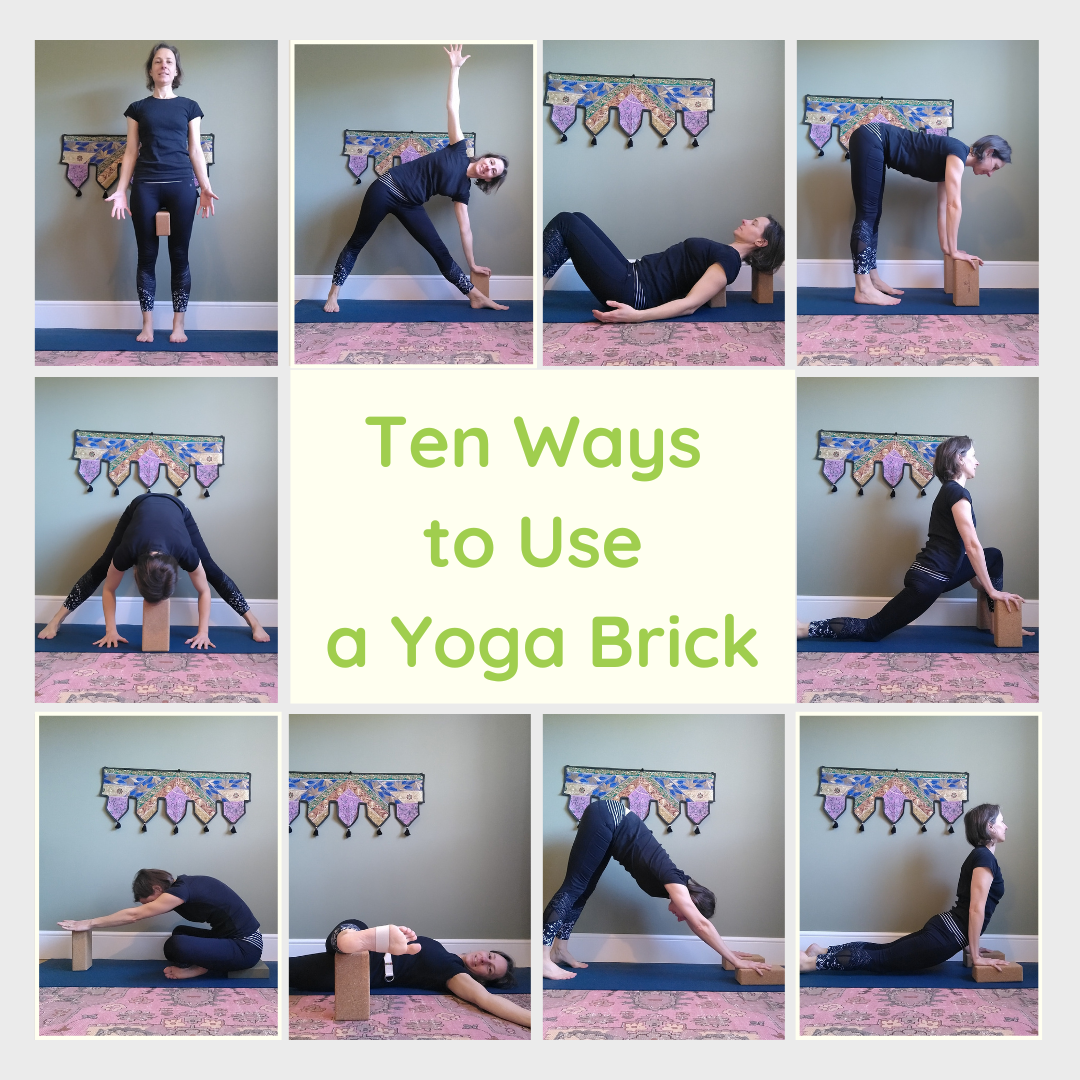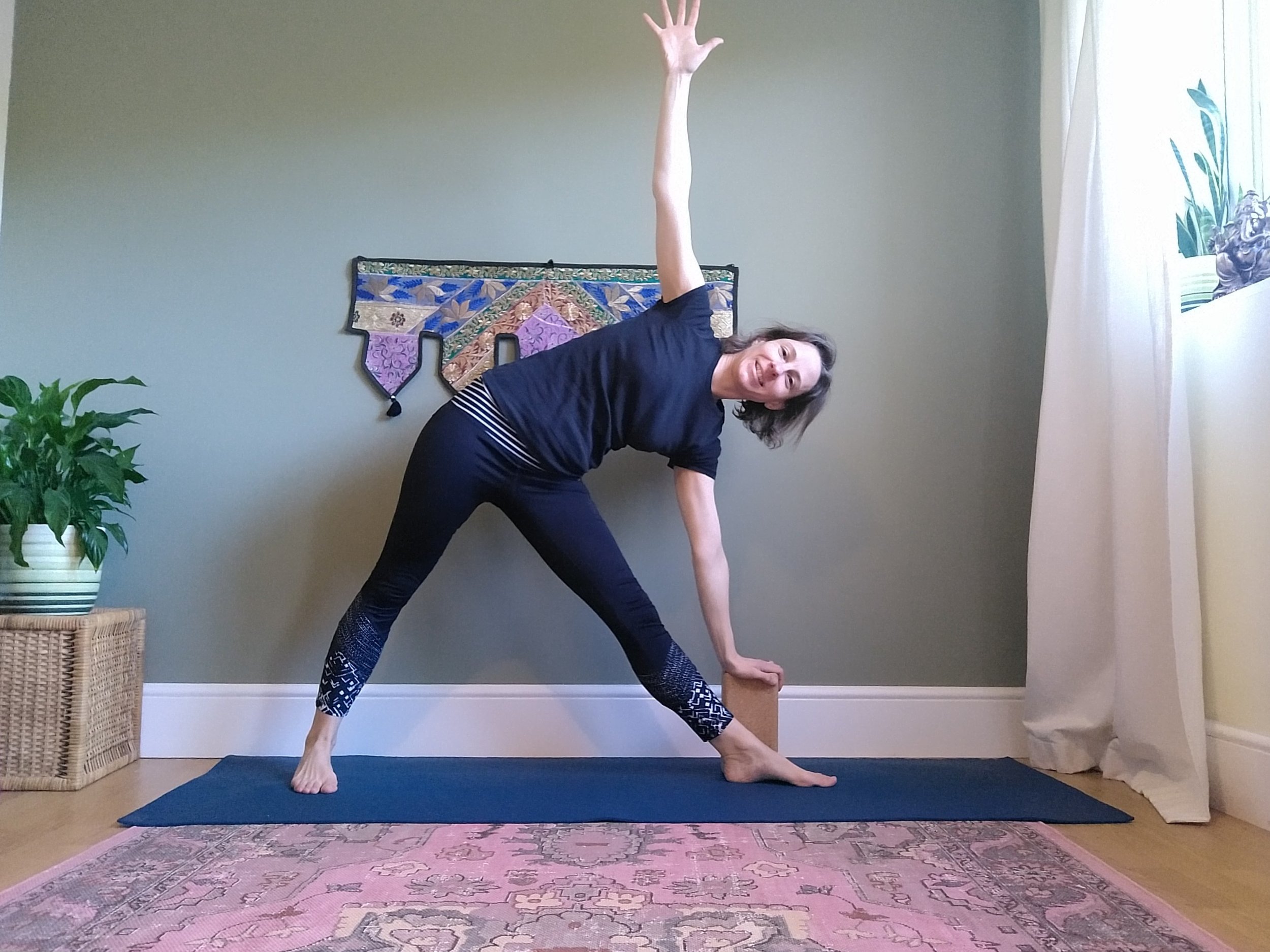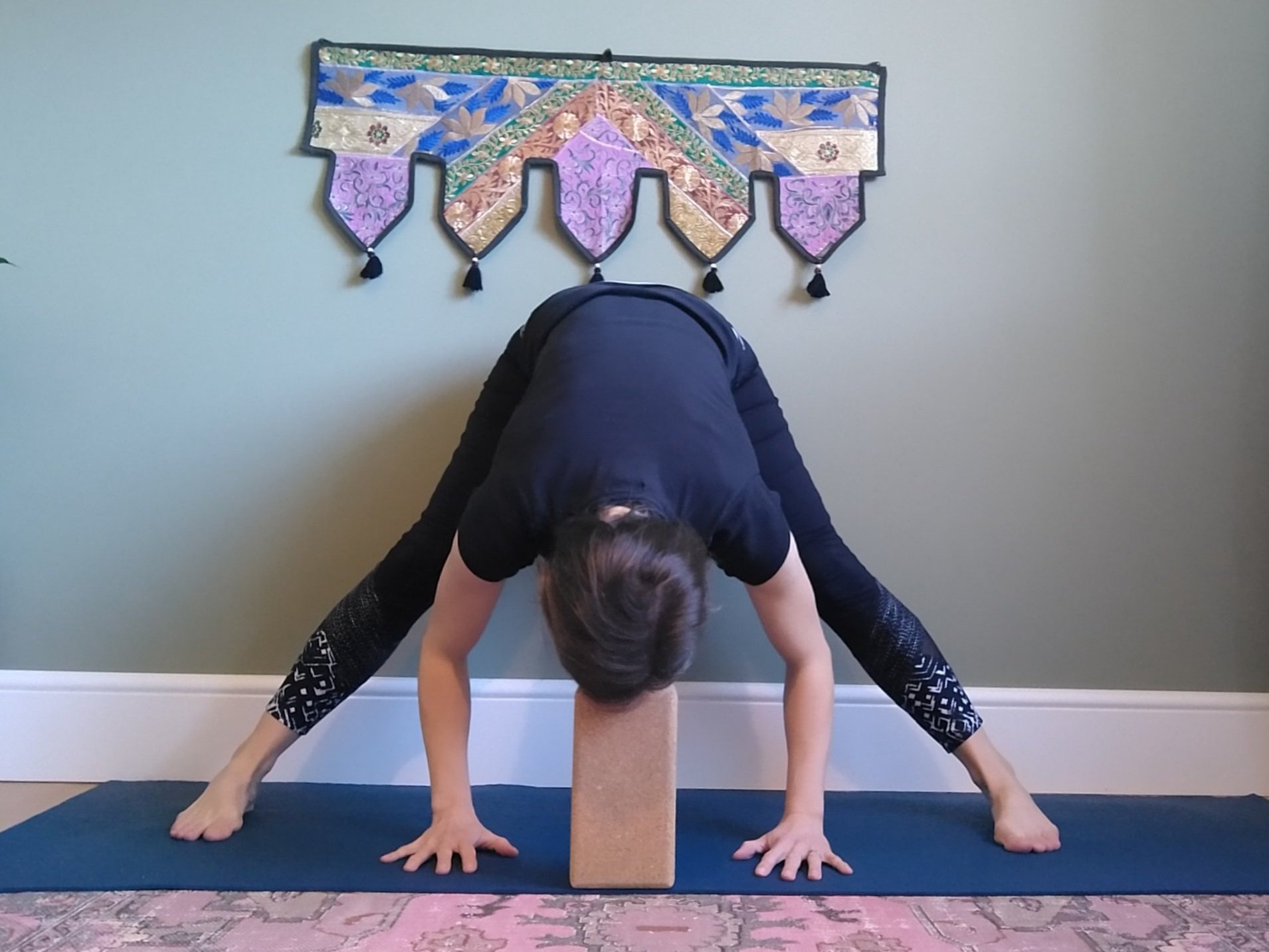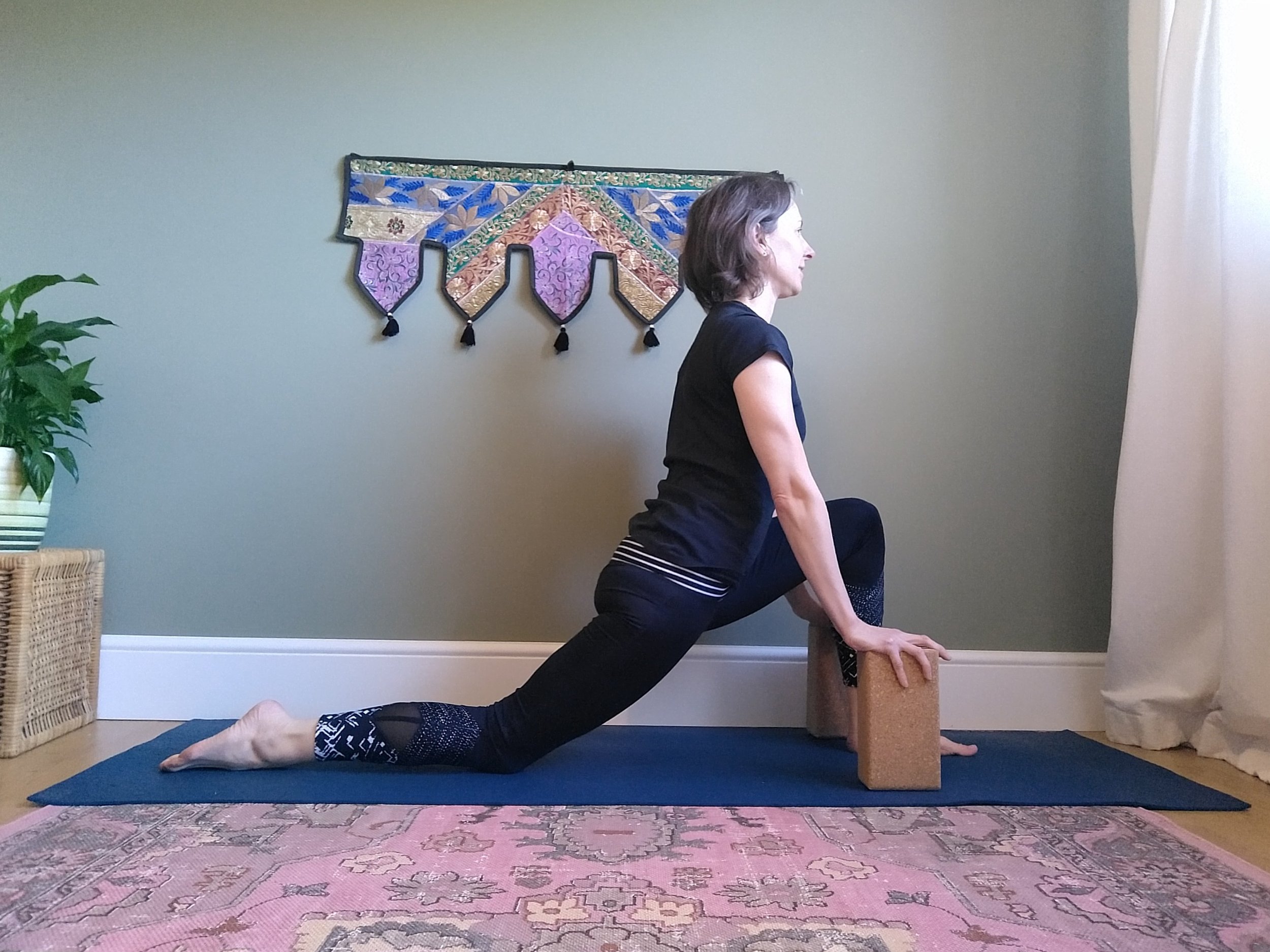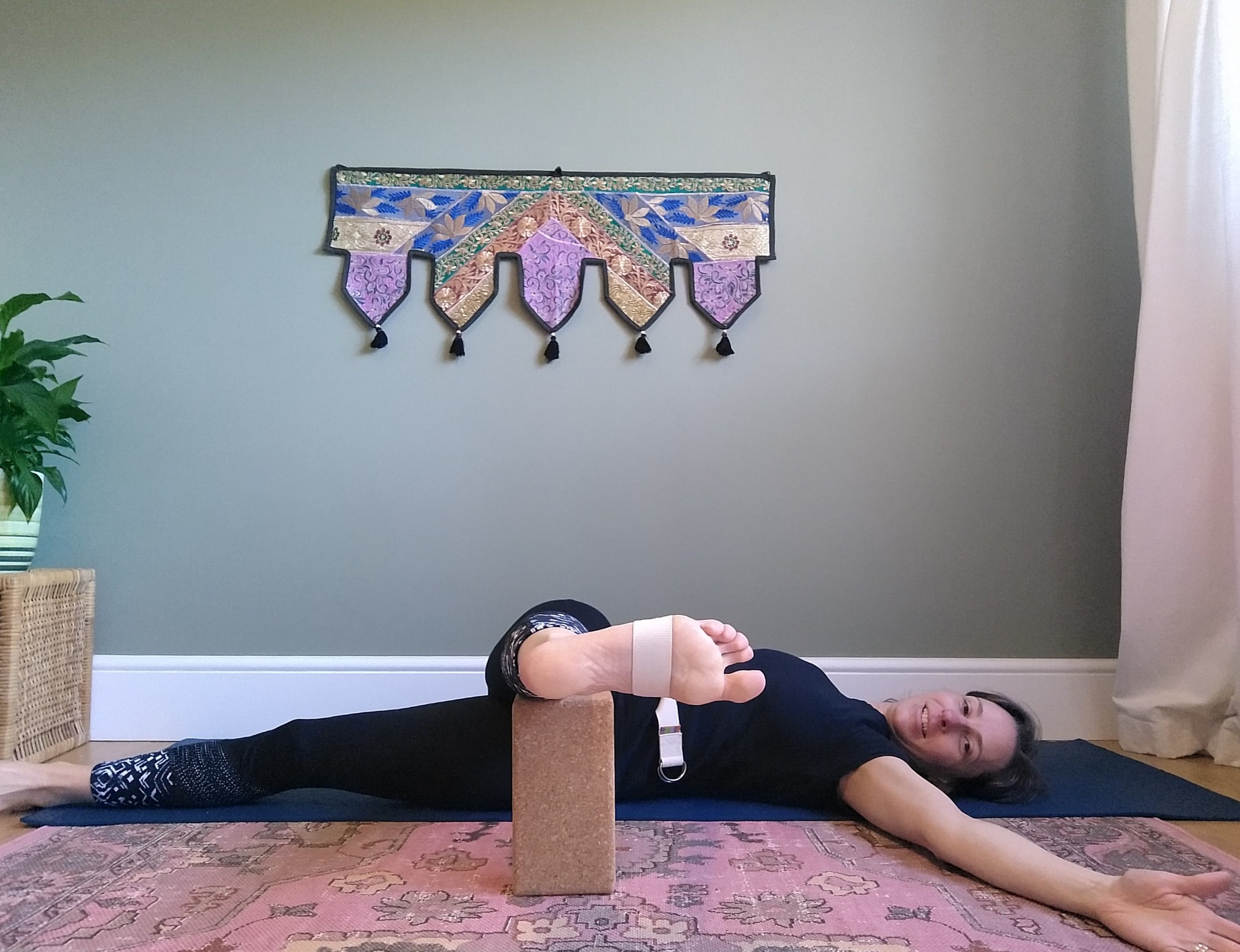10 Ways to Use a Yoga Brick
Yoga bricks, after yoga mats, are probably the most widely found yoga prop.
If you are new to yoga and got a yoga brick with your first yoga mat, you might have been wondering what it is for. Well here are a few ideas!
BKS Iyengar was credited with popularising the use of yoga props through his school of yoga. Props are a useful aid to help you to support a yoga pose; find your way into a yoga pose more fully; and in restorative yoga, props are used to hold the body in yoga poses so that the body can rest and enjoy the benefits of the pose without the effort of holding the pose.
Over the years many yoga props and supports have been developed to support the spectrum of yoga poses but you can’t go wrong with the basics. Simple yoga props include: belts, bricks, blocks, blankets, chairs, bolsters, cushions and using a wall. In my blog I will be sharing some ways to use these props in your practice.
There are often ways to use household alternatives if you don’t have an official yoga prop, it depends on the pose and what the prop is doing to help.
For example bricks can be substituted for books of the same sort of size if you are using them to support you in a pose such as updog or a couple of tins of beans might suffice in standing forward fold or low lunge if you are using them as arm extenders to reach the floor. Sometimes a different prop such as a chair or a pile of cushions or folded blankets is a better alternative. Whatever you use make sure it is solid and sturdy enough to support weight – an empty shoebox might seem like a good size, but it will collapse when you lean on it!
Yoga props are useful, but not essential. Many styles of yoga don’t use props at all. But from experience of my own yoga practice and teaching over the past ten years, props can help students to feel the shape or essence of a pose better, especially if they are more restricted in their movement or flexibility. They can make poses more achievable, especially if you are a beginner. For the more advanced students they can help to find more nuance in poses.
So what poses can you do with a Yoga Brick? Here are just a few ideas...
Tadasana
Hold the brick between your thighs in Tadasana. This activates the muscles in your thighs, glutes, and around your pelvis, hips and lower back. Good for strengthening.
It can also help you to find a neutral pelvis position and support spinal alignment.
If you don’t have a brick – try a cushion.
2. Trikonasana
Use a brick to support your lower hand in Trikonasana. The floor can seem very far away! Often if we over reach for the floor in this pose, the upper body tends to lean forwards, so we lose the lovely openness in the chest and the fullness of the stretch. A brick can help you to open up in the pose.
If you don’t have a brick – rest your hand on a chair seat, or a low stool instead. You can also place your hand onto your leg to support you, but again be mindful of not leaning forwards – resting your hand higher on the leg can help you stay more open in the chest.
3. Restorative Chest Opening
This is a wonderful pose to counterbalance a lot of leaning forwards. Use a brick horizontally at the bottom tips of your shoulder blades, and one under your head. Be sure that the brick under your head is at least the same height as the one under your upper back, so that your neck is well supported.
This is a gentle backbend and opens up the chest.
If you don’t have a brick – try a rolled blanket under your shoulder blades, horizontally across the short edge of your mat, and cushions to the right height under your head. This can be a softer version and more accessible if you have tighter shoulders and upper back.
4. Standing Forward Fold
Bricks can be used as arm extenders in forward folds. If you want to work towards straighter legs in this pose you can bring the floor up to you if you can’t reach down to it, by using bricks. You can vary the bricks height over time as you become more open in the backs of the legs until you comfortably reach the floor.
If you don’t have bricks – you can bend your knees until you touch the floor – this will release the spine and you work towards less knee bend over time as your flexibility, and the openness in your legs improves. If you want to work more on keeping the legs straight you could rest your hands on a chair or low stool and not fold forwards to far.
5. Standing Wide Leg Forward Fold
A brick can help you to lengthen the spine in wide leg forward fold by giving you something to reach the top of your head towards. If you are close enough to the floor you can vary the brick height to meet the gap between the head and the floor.
If you don’t have bricks or are a long way from the top of your head being near the floor – as with Standing Forward Fold above, you can bend your knees to release the spine and neck, or use a couple of bricks in a taller tower, or even a chair seat.
6. Low Lunge
Bricks can help you to find balance in low lunge. You can vary the height to suit your body dimensions. You might rest your hands flat or just the fingertips on the bricks. Make sure they are the same height each side to be balanced in alignment.
If you are practising transitioning from one side to the other – changing legs – you can lean on the blocks to help you transition back and forth.
If you don’t have bricks – tins of beans might be tall enough, or use a chair to rest your hands on in front of you. If you improvise with anything else, make sure it is sturdy enough to hold your weight.
7. Seated Forward Fold
A brick can help you lengthen the spine in a seated forward fold. Whether your legs are crossed, or straight and wide, you can reach forwards and rest your hands on a brick. This helps to extend your spine and the back of your body. Be sure to hinge at your hips and keep the lower back moving in and up – don’t round the upper back (sitting on a cushion or folded blanket can help with this).
If you don’t have a brick – a pile of books, folded blankets or cushions could work.
8. Revolved Supine Twist
Rest your foot on a brick in revolved supine twist. Whether you are using a strap to support your straight leg or not, as you bring the leg across the body you can rest the foot onto a brick to hold the twist gently for a few breaths with less effort.
If you don’t have a brick – a pile of books, folded blankets or cushions could work.
9. Downward Facing Dog
Give yourself more space using bricks under your hands in Downward Facing Dog. This can help to open up the back of the body and shoulders and give you more space and freedom as you are exploring the pose. (you can transition to plank or up dog with hands still on the brick). It’s also useful if you are practising stepping through to Low Lunge as you have a little more space and height to bring the leg through to the front.
If you don’t have a brick – you could use two similar sized thick books, but they might be slippy. - you might have to just work with hands on the floor in the traditional position.
10. Upward Facing Dog
Use bricks under your hands to give you space in Upward Facing Dog. This can help the pose to be a little less intense (especially if you also rest the pelvis on a brick or cushions.) It’s also useful if you are transitioning from Plank or Downward Facing Dog into Upward Facing Dog.
If you don’t have a brick – you could use two similar sized thick books, but they might be slippy. - you might have to just work with hands on the floor in the traditional position.
3. Tadasana
2. Trikonasna
3. Restorative Chest Opener
4. Standing Forward Fold
5. Standing Forward Fold
6. Low Lunge
7. Seated Forward Fold
8. Revolved Supine Twist
9. Downward Facing Dog
10. Upward Facing Dog
You will notice that bricks can be used at different heights.
There’s the tall position, medium and lowest position depending on which way up they are. This makes them versatile and you can tailor what you need to your body dimensions. For some poses for example Trikonasana, you can work on lowering the height of the brick under your hand over time until you are able to reach the floor without losing the alignment of the pose.
You will find bricks in various materials – traditional bricks are wooden, there are cork versions and softer foam versions. Firmer wooden bricks can be very stable, but heavy. Foam bricks more comfortable to rest on. Cork somewhere in-between. It’s all about individual preference.

